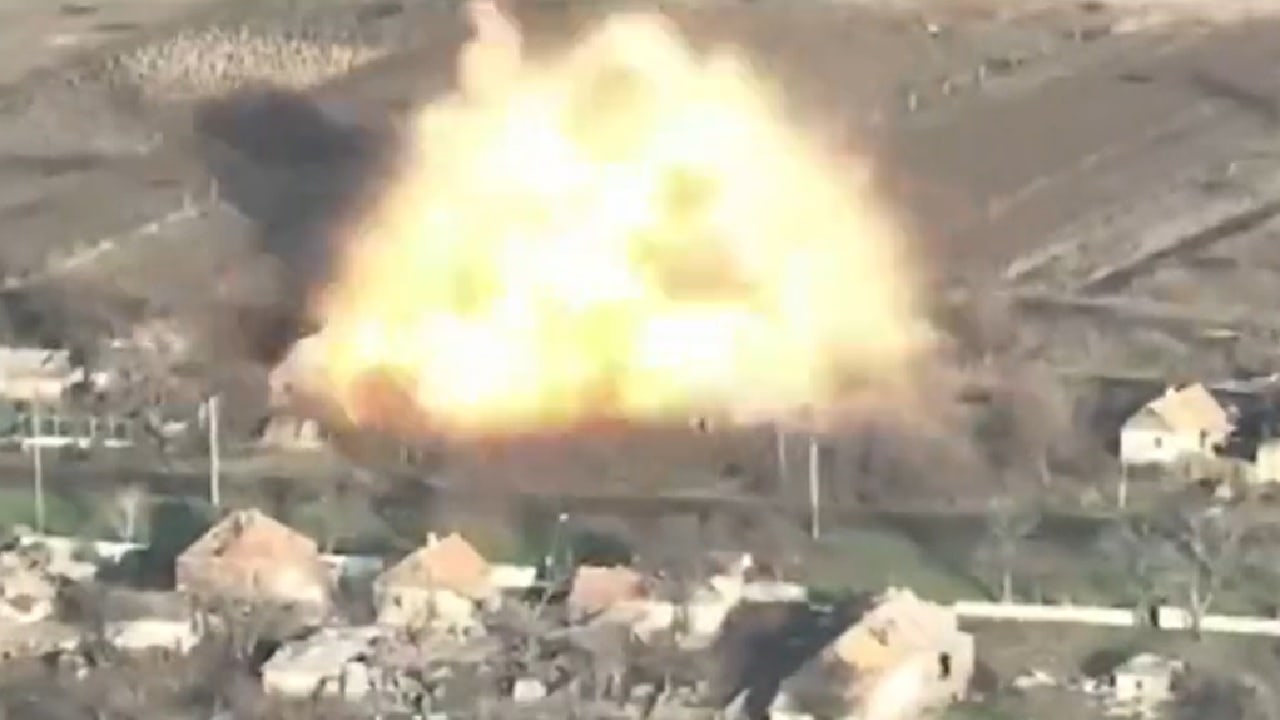Moscow celebrated its annual Victory Day parade yesterday, commemorating the former Soviet Union’s victory over Nazi Germany in 1945. This celebratory event in Russia follows closely behind an alleged drone attack intended to take out President Vladimir Putin at the Kremlin last week.
While the yearly parade usually consists of Moscow showing off its most advanced military equipment and weaponry, this week’s event is different since the majority of Russia’s troops and hardware is positioned in Ukraine to aid the country’s invasive war efforts. Perhaps to compensate for its lackluster parade, the Kremlin launched its most intense barrage of kamikaze unmanned aerial vehicles (UAVs) and missiles targeting Ukrainian forces overnight in Kyiv. Russian projectiles killed at least one person in its “biggest” killer drone attack to date.
Kyiv’s Mayor Vitaliy Klitschko told news outlets that roughly 60 drones pummeled the capital city, including Iranian-made Shahed kamikaze drones. “X-22 type missiles hit the warehouse of one of the food enterprises and the recreational zone on the Black Sea coast,” the Ukrainian military said.
“Emergency services work at the scene. Three people, all workers of the warehouse, got minor injuries. One person is missing,” the head of Odesa district military administration Yuriy Kruk reported. Over the last month or so, a noticeable lull in drone activity by Russian forces indicated that the Kremlin was running low on its stockpiles.
Moscow, however, has intensified barrages targeting Ukraine over the last week. When Russia claimed that Kyiv was behind the alleged drone attack that struck the Kremlin, Ukrainian officials denied this and suggested that Putin just wanted an excuse to ramp up hostilities along the front lines of the war. Perhaps Russia is re-stocked with Iranian-made drones and is exploiting its “justified” effort to retaliate against the Kremlin attack.
What are kamikaze drones?
Loitering munitions, often referred to as suicide or kamikaze drones, have played a significant role in Russia’s ongoing invasion of Ukraine. These cheap, highly lethal and versatile weapons have proven to aid both side’s war efforts in the conflict.
While Ukraine’s arsenal of deadly UAVs has been imported from Western countries and Turkey, Russia depends on shipments of Iranian-designed drones. Although Tehran has previously refuted being involved with the Ukraine invasion, the country has become a regional manufacturing drone powerhouse. The U.S. has released reports and captured footage depicting Russian delegations viewing a variety of Iranian drones at the Kashan Air Field and receiving training from Islamic Revolutionary Guards Corp (IRGC) officials on how to properly use the weapons.
Which Iranian-made UAVs are used by Russian forces?
One of the most prominent UAVs used by Russian forces in Ukraine is the Shahed family of drones. The Shahed-136 UAV is powered by a Chinese MD550 engine and can travel up to a few thousand kilometers. Its long range has given Moscow the capability to strike deep inside Ukraine. Moscow is believed to be using surveillance-capable drones like the Iranian-made Mohajer-6 to compensate for the Shahed-136’s lack of camera.
The Shahed-131 variant is an earlier version of the Shahed-136. While this UAV is smaller in size than its successor, the Shahed-131 shares similar capabilities and components.
MORE: Why Putin Fears the M1 Abrams Tank
MORE: I Went to War in the Leopard 2 Tank Ukraine Wants
Maya Carlin, a Senior Editor for 19FortyFive, is an analyst with the Center for Security Policy and a former Anna Sobol Levy Fellow at IDC Herzliya in Israel. She has by-lines in many publications, including The National Interest, Jerusalem Post, and Times of Israel. You can follow her on Twitter: @MayaCarlin.

